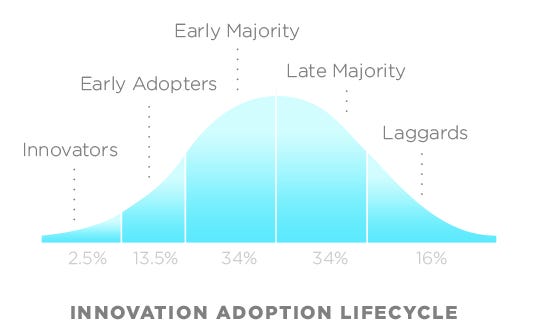Leadership in the Age of AI
How leaders can (and must) navigate the excitement and apprehension of AI
Today leaders stand at a pivotal crossroads.
The emergence of AI, isn't just another passing disruption; it's a seismic shift that will fundamentally alter the way that we work and operate.
The launch of ChatGPT elicited a mix of excitement and fear regarding the potential impact of technology on the workforce.
Early analysis from Goldman Sachs have suggested that generative AI could significantly disrupt the global job market, potentially affecting around 300 million jobs.
AI is, right now, inescapable. And it requires leadership attention.
As organisations worldwide increasingly integrate AI into their strategies, it's not enough to merely acknowledge its presence. The tidal wave of ‘AI’ driven products released into the market since ChatGTP became publicly available shows that the AI is not going away.
You must set the standard for responsible AI use within your business. And that means leading by example.
The challenge is that just like the rest of humanity, you may personally be brimming with excitement, or you may be harbouring apprehensions about what this next technological revolution might bring.
The same goes for those you lead.
Whether you lean toward caution and skepticism or embrace the possibilities with enthusiasm, your role as a leader is clear: you must model ethical AI use and educate your teams to navigate the opportunities and challenges ahead.
We know there are challenges. Concerns about accuracy, transparency, bias and privacy loom large. Yet the undeniable advantages of AI technology are irresistible for those striving to remain competitive.
“AI offers a good example, favouring the long-term-thinking approach. Will AI disrupt everyone’s lives today? Probably not. It’s, for many of us, not an immediate threat. But ignoring the implications and trends that AI is going to bring with it over time would be a massive mistake.” Peter Giger, Group Chief Risk Officer at Zurich Insurance Group
AI’s integration into day to day operations, from crafting sales pitches, developing presentations, drafting emails and quickly analysing information, for many it is becoming a necessity rather than a choice.
So however you personally feel, for leaders, ignoring AI is not an option.
Likewise, unreservedly championing it within your organisation without thinking broadly and strategically about the risks that you are preparing to tolerate and the culture you are creating.
Leadership and AI are inextricably linked.
Let’s take a deeper look.
Know another leader who is interested in the intersection between AI and leadership? This post is free, so feel free to share it with them.
Model: The technology adoption lifecycle is a model that describes the way populations of people adopt or accept new products or innovation.
An early adopter for example is someone who embraces new tech or tries a new product before most others. Whereas those in the late majority group have a high degree of skepticism and adopt new tech later than the majority of society.
Reflect on your Board makeup and leadership team.
Where would you individually see yourselves as leaders?
Where would you see yourselves as a collective Board team?
What opportunities and what risks does that pose?
Expand: In your business, as in your leadership team, you’ll have a mix of early adopters, early majorities and late majorities. And some laggards.
Early adopters will be more likely to get swept away by the awe inspiring possibilities of AI, keen to test it out publicly or privately for their work. The later majorities will be significantly more skeptical.
Adapting your style to keep all camps motivated and engaged is critical. Too many constraints on early adopters will leave them feeling frustrated. Yet pushing those who are nervous into using AI tools without careful positioning will result in increased anxiety and worry.
Reflect on those you lead:
Who are your loudest early adopters and early majority?
What do they need from your leadership different to each other?
What opportunities are there to utilise their approaches to the benefit of the business?
Own it: Many larger organisations are now creating designated Centres for AI Excellence. That may not be an option in your business, but the intentional strategic use of AI requires accountability and strategic oversight that goes beyond the broad role of your executive team, or the more narrow role of your Chief Risk Officer.
Ask yourself:
To what degree is it clear what the degrees of tolerance are for using AI in your workplace?
How well integrated is AI into your SOP’s and frameworks?
What models of leadership accountability typically work well in your organisation?
Listen: This podcast by Harvard Business Review features Tom Davenport a professor who has been studying how employees are using new AI tools and how companies can both encourage and benefit from this work; along with practical tips for team and leaders.
Related reading:
If you’ve enjoyed this week’s issue please hit the 💜 button below so that more leaders can find it.
Meantime if you haven’t already, you can subscribe to receive the next issue straight to your inbox.







